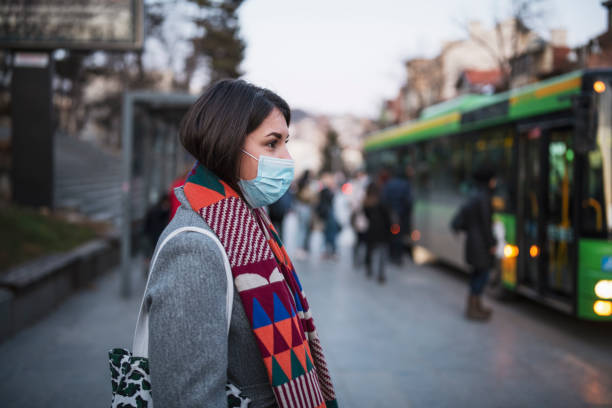Wearing a respiratory protection mask is certainly essential to protect people around you, particularly fragile people and people at risk, and prevent the spread of Covid-19. However, many people experience some side effects. And although many of the disadvantages of the mask disappear when you get into the habit of wearing it well, other effects can remain when you wear it all day. Not wearing it is not an option, you have to learn to live with it! The sensation of heat, small red spots and skin irritations, fog on the glasses.
Here are our simple tips to better support the mask in your daily life.
How to limit the fogging of your glasses when you wear your mask?

Eyeglass wearers have to cope with one discomfort: personal protective masks promote fogging of the lenses. Fortunately, there are several tips to limit fogging. Buying masks with a bar at the bridge of the nose allows the mask to conform to the shape of the nose. Worn high on the nose, putting the glasses on top to secure it, the mask then lets less hot air pass. It is also possible to apply an anti-fog spray or homemade solutions: shaving foam or soap. Soapy water, for example, dishwashing liquid, will leave the glass durably protected from fogging.
How to manage when you can’t stand the mask because of headaches and migraines?

Few studies support the link between headache and mask. However, it is one of the most reported side effects, according to the WHO. There are many reasons here:
-Often the problem is not the mask itself, but more the dehydration. By wearing it, we have less of a reflex to hydrate, and we must think about drinking more when wearing it to limit the appearance of headaches.
-Also, the products used to clean reusable masks can also give you a headache. Therefore ban highly scented chemicals as well as bleach to perform this cleaning.
ALSO READ: 8 healthy snack ideas!
-Finally, we sometimes involuntarily contract our face when wearing the mask, thus creating muscle headache tensions. Take care to breathe slowly and deeply, while remembering to relax the muscles in your face.
How to limit the skin problems favored by the mask?

The mask is difficult for the skin to bear. Even when you don’t have sensitive skin, repeated rubbing on the epidermis can attack the skin barrier. In doing so, we may notice redness or blemishes, and our psoriasis or eczema may get worse. To avoid and combat these skin problems associated with the mask, aggressive products that can worsen the situation (grain scrub, etc.) should be avoided, and men should shave their beards. Maintaining beautiful skin depends on good hydration with a suitable moisturizer. You can also use a soothing and protective repair cream in the evening and use gentle products, especially concerning the cleanser. The make-up is not to be avoided, but must be non-comedogenic and remain light in the complexion. However, makeup removal will then be an absolute necessity.
What to do when you have trouble breathing with your mask on?

Fantasies, even disinformation, are very widespread around the mask. Today, however, we know that wearing a mask does not cause a lack of oxygen, CO2 poisoning, or fainting. Are you feeling short of breath or dizzy? It is probably because your mask is not suitable! Indeed, approved masks are designed to allow sufficient oxygen to pass through. However, this is not the case with homemade masks and unapproved masks, which are too waterproof. Therefore, favour surgical masks over fabric masks.
You can do the candle test to find out if your mask is filtering enough. With your mask, blow on a candle placed in front of you. If it goes out, the mask is not filtering enough. And if the flame doesn’t move at all, your mask is probably too filtering!